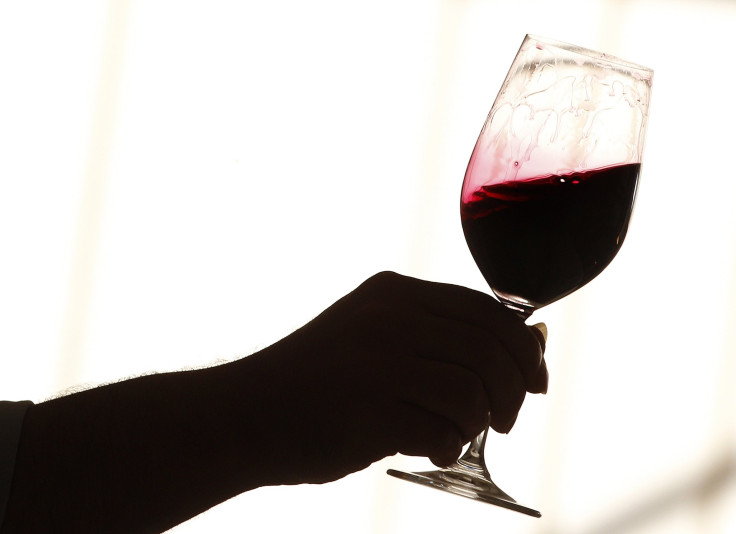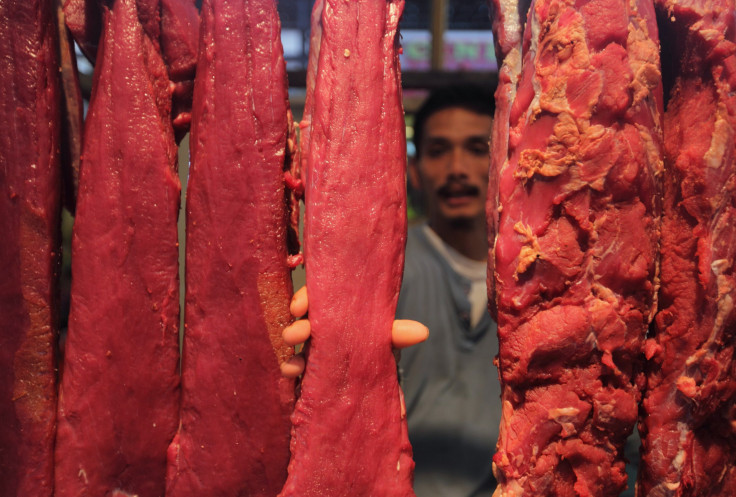Red Wine Benefits Don't Make Up For All The Other Unhealthy Stuff You Do

Americans love wine. Over the last 50 years, our annual consumption has increased by nearly two gallons per person, from 0.93 gallons in 1963 to 2.82 gallons in 2013. But we don’t love all wines equally. Americans bleed red.
We love red wine for many reasons. We love it for its deep, rich, earthy notes, for its air of sophistication, and, because the last decade of red wine research has a terrible confirmation bias on its hands, for its supposed health benefits. Each year, a handful of studies say red wine is good for heart health, and another handful say alcohol is generally harmful. This is a problem. People can’t make informed personal health decisions if the experts at the head of the river can’t come to a consensus on the information that flows downward, even if the science they are doing is good.
America is in the throes of an obesity epidemic, which makes healthy eating more of a priority. The truth is, binary prescriptions about what’s good or bad for us have never worked, and red wine has the potential to be a watershed change in how Americans think not only about what they put in their bodies, but when and how they do it.
No Medal For 52nd
From purely a scientific standpoint, the upsides of red wine are clear. Red wine contains resveratrol, a polyphenol that raises so-called good cholesterol levels and produces nitric oxide, which dilates your blood vessels and lowers the force needed by your heart to pump blood. It also has antioxidants that keep other molecules in the body healthy.
But if you were to list the foods with the greatest concentration of polyphenols and antioxidants and standardize that list by concentration, kind of like the European Journal of Clinical Nutrition did in 2010, you wouldn’t come across red wine until you first passed 52 other foods. In terms of polyphenols, red wine doesn’t beat out apples or almonds, spinach or strawberries, black olives or blackberries. It fares slightly better than apples and blueberries in its antioxidant content, ranked 39 out of 100, but it still falls below coffee, green olives, and dark chocolate, just to name a few.
Red wine is so middle-of-the-pack average, in fact, that some doctors won’t even bother mentioning its upside to their patients. Dr. Dennis Goodman, cardiologist and director of integrative medicine at NYU Medical Center, says the only people qualified to drink red wine on a daily basis are people who maintain a healthy weight and have no family history of alcohol abuse.
“The bottom line is, there are too many things that are not good about drinking alcohol,” Goodman told Medical Daily. Modest amounts of heart-healthy compounds still can’t protect against the dangers of high blood pressure, heart arrhythmias, cirrhosis of the liver, and a litany of cancers, including cancers of the mouth, esophagus, throat, and breast. “I never tell my patients that if they’re not drinking, to start drinking.”
The point Goodman emphasizes is that a glass of red wine a day — that memetic catchphrase wine lovers have made both their mantra and their calling card — doesn’t give you anything that other foods can’t also give you without any of the consequence. However therapeutic it may be to sit fireside with a glass of merlot, if it’s heart health you’re after, the fruits and vegetables hurtling toward their expiration dates inside the fridge should be what you reach for. Other options, such as fish, nuts, and beans, also do your heart a service thanks to the medium-chain fatty acids they contain. Such are the foundations of the Mediterranean diet, which has been studied for years as a model for well-balanced eating.
That is one concession Goodman makes: If we all ate like Greeks and Italians, we’d have earned our daily glass. There’s just one thing: Americans don’t eat Mediterranean diets. We eat Western diets. And Western diets delete just about every benefit red wine offers.

An Improper Pair
When we talk about the relative pros and cons of drinking red wine, we’re really talking about how red wine fits into a larger lifestyle. It’s important to acknowledge the scientific merit of pouring a substance into the machine of your body, but that raw information is only useful if we can apply it to real-world behavior. As Goodman explains, the Greeks and Italians who drink a glass a day typically pair it with something light, like a salad. “But if you’re having your wine with 3,000 or 4,000 calories day,” he said, “then it’s not going to help you.”
And that is the critical point. Looking at what wine alone does to the body isn’t enough. If we are ever to establish healthy boundaries for drinking wine, we need to know more about the context in which we drink it. Thankfully, the people at Cornell University’s Food and Brand Lab are responsible for finding solutions to those very problems.
Since he founded the Food and Brand Lab in 1997, Brian Wansink and his colleagues have conducted hundreds of studies in their restaurant-lab hybrid, looking at how hidden factors influence people’s food choices. In 2014, for example, Wansink and two other researchers found people over-poured their wine by 11.9 percent if they used a wider-than-average glass. They also over-poured by 12.2 percent if they held the glass in their hands while they poured. Suddenly, a glass a day had become an unreliable measure.
Of course, wine is seldom consumed on its own. Even the heart-healthy Europeans cobble together some spinach, feta, and tomatoes before they drink. In addition to consuming red wine with dinner, which, in the U.S., is statistically high in refined carbohydrates and protein and low in vitamins and minerals, we find reasons to drink at both major celebratory events and intimate social gatherings. But so do Europeans. In 2012, Americans drank 2.8 gallons of wine per person. Meanwhile, Greeks drank 7.4 gallons, Italians drank 9.9 gallons, and the eternally imbibing members of the Vatican City State drank 19 gallons, or roughly a gallon of wine every three weeks.

In other words, something else has to be going on. Dozens of countries are drinking way more wine than us, but the U.S. consistently falls below them in measures of overall health. Wansink says the whole thing may be doomed from the start.
“I think there’s a triggering effect that foods have in the United States that is different than what we see in other countries,” Wansink told Medical Daily. Stateside, pairing is seldom light and fresh. We like pairing our wines with steak, or more wine. “By virtue of the types of food we eat in America, it leads us to over-consume more than if we were eating the foods that were more common in Italy or the Mediterranean.”
With that in mind, Wansink concedes that if we gave a New York strip steak to an Italian to drink with her wine, her body would respond the same way. There is nothing inherent in American wine consumption, in other words, that makes it unhealthy. Our brains have just found the wrong trigger, so we shoot ourselves in the stomach.
Dark As Noir
Maybe we have history to blame for our sour relationship with wine. The United States is much younger than other countries, many of which have honed the art of pairing a glass of wine with food for hundreds of years. Like British comedies and German automobiles, Americans love adopting the best practices of other countries. But we also have a measure of stubbornness that prevents us from accepting criticism or doing things somebody else’s way. The two seem to be at odds.
As a result, we are drinking more wine than we ever have. Our waistlines are also the largest they’ve ever been, and neither trend seems to be slowing down. The majority of people know alcohol consumption does nothing for their health — that fact has been hammered into young brains since elementary school, and usually all the way through college. But without an appreciation for the other aspects of our decision-making, which dictate how many notches on our belt we can comfortably tighten, nothing will change. The reality of red wine drinking will continue to drown in the dark depths of a perfectly-aged Pinot.



























